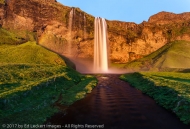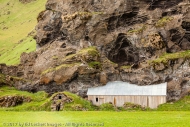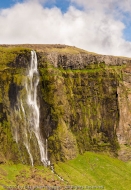


Last week I talked about the Passport To Your National Parks® as a way to get folks to visit lesser-known parks, and promised to tell you a little bit about some of the ones I visited on my way to New England. Today I’d like to start by giving you a brief look at two of these sites.
The first is the Theodore Roosevelt Inaugural National Historic Site in Buffalo, New York. Not to be confused with the national park named after him in North Dakota, this national historic site commemorates the tragic events at the Pan-American Exposition in 1901 that thrust then Vice-President “Teddy” Roosevelt into office suddenly. The exposition was intended to celebrate the progress that the area had experienced in 100 years of settlement, and the world was invited to join in. A bit like a world’s fair, it focused on technology breakthroughs, but also celebrated the harmony between nations of the world – and the celebration started just as soon as Teddy finished kicking butt in the Spanish-American War.
On September 6th of 1901, President McKinley visited the exposition and was shaking hands with an enthusiastic crowd when Leon Czolgosz, with a handkerchief concealing his right hand and a gun, reached the front of the line and fired two shots into McKinley’s abdomen. The President was treated and sent to the home of John Milburn, President of the Pan American Exposition, where he appeared to be recovering. Sadly, his condition then began to deteriorate, and by the morning of September 14th he was gone.
The site is located in the former home of Ansley Wilcox, a prominent local resident and friend of Roosevelt’s, where the inauguration of Theodore Roosevelt took place. This was deemed a more appropriate location than the Milburn residence where the President had died just that morning.
OK, so that’s the history, but the park service has done an amazing job of bringing the history to life. The home is beautifully decorated as it was that day, based on the photographs taken once the inauguration was over – photographers were not allowed during the ceremony due to the small size of the library used for the event. There’s even a delicious looking meal set out on the dining room table – complete with smell-effects. It’s like going to Disneyworld! In fact, children of all ages can have their photograph taken at a presidential-looking desk with the American flag in the background, and receive an official-looking document commemorating the occasion. All in all, I give this location very high marks for bringing the events of 1901 to life.
Oh, and one other thing. The location is only three blocks away from the legendary originator of the famous Buffalo Wings, the Anchor Bar! I didn’t go in – the neighborhood is a little rough-looking, but it’s there if you want to try it!
The second location we’ll check out is the Saint-Gaudens National Historic Site in Cornish, New Hampshire. When I arrived at Theodore Roosevelt’s inaugural site I had a pretty good idea what the topic would be, but I have to admit I had no idea what Saint-Gaudens was all about. Well, it turns out that Augustus Saint-Gaudens was one of America’s greatest sculptors. He lived from 1848 to 1907, and the site preserves his home, gardens, and studios. Saint-Gaudens met and/or sculpted many famous people including General Sherman, Robert Louis Stevenson, and President Abraham Lincoln. He also designed the 1907 Twenty Dollar Gold Piece, considered to be America’s most beautiful coin.
Over 100 of Saint-Gaudens sculptures are distributed throughout the beautiful home, galleries, and gardens of this western New Hampshire location, located just across the Connecticut River from Vermont. The grounds include a couple of hiking trails, and offer views of Mount Ascutney and the Green Mountains of Vermont to the west. The site even includes a very impressive collection of horse-drawn carriages of every type imaginable, including some designed for commercial or road maintenance use.
Both the Theodore Roosevelt and Saint-Gaudens sites offer free Ranger-guided tours of the homes, but also allow for casual unguided exploration of the exhibits and grounds.
OK, that’s enough history for today. Follow the links back to the National Park Service sites to learn more about these historical gems.
